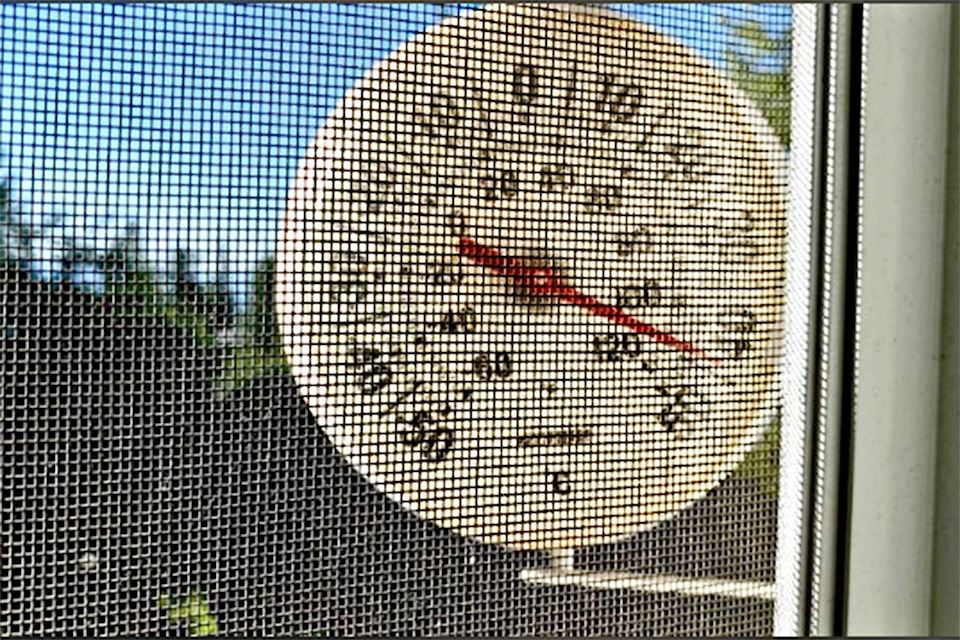During the last week of June 2021, the Pacific Northwest experienced a heat dome, or days of exceptionally hot, dry weather. A new Canadian record of 49.6 C was set in Lytton. The heat dome led to at least 808 deaths in B.C. That’s like two jumbo jets colliding over B.C. with no survivors. Where is the global media coverage?
We’d spend millions investigating the cause of such a collision. What caused the heat dome?
The World Weather Attribution (WWA) initiative is a scientific collaboration between climatologists at universities in the U.K., the Netherlands, France, the US, Switzerland and India. The WWA assesses the role climate change plays in specific weather events. The WWA’s assessment of the heat dome concluded it “was virtually impossible without human-caused climate change.”
In short, we caused the heat dome by our consumption of fossil fuels which results in climate change. Now that we know our behaviour is the cause, we can change our behaviour and fix the problem. Easy peasy, except the inconvenient truth is we refuse to change our behaviour and continue to deny.
Canada’s Conservative Party is struggling with a response to the climate crisis. At their convention last March, they rejected the phrase “climate change is real” from their platform even though Conservative leader, Erin O’Toole, told members they “cannot ignore the reality of climate change.” O’Toole said, “Canadians expect us to have a real plan for the environment.” He doesn’t want Conservative candidates to be branded as “climate change deniers.”
Weirdly, denying climate change has worked for the Conservatives. They won the highest percentage of the popular vote in the last federal election without a plan to address the climate crisis beyond cutting job-killing carbon taxes. That’s about where they are currently although with a leader pulling to the left and the party clinging to the right.
The federal Liberals, Canada’s second most popular political party in the 2019 election, differ from the Conservatives because they’re pulling in all directions. They acknowledge climate change, but refuse to act on it beyond too-modest-to-be-effective carbon taxes: denial incognito.
Liberals flounder in contradiction. In 2015 Justin Trudeau flipped when he promised $2.65 billion to the UN’s Green Climate Fund. In 2017, he flopped when he said, “No country would find 173 billion barrels of oil in the ground and leave them there.” He’s been flip-flop and flying on an impossible promise magically to have it both ways by investing oil sands revenues in a green economy.
In a lunatic conniption, he spent billions buying the Trans Mountain pipeline. He’s permitted panic pumping (a doubling of oil sands production) over the past decade before the reality of the climate crisis combined with a crash in demand for dirty fossil fuel forces closure of the oil sands. He didn’t blink as Canada’s greenhouse gas emissions rose. Canada is the only G7 country to achieve such notoriety since signing the Paris Accord.
What’s guaranteed is continued inaction on the climate crisis by the Conservatives and the Liberals.
What’s required is for Canada to act decisively to limit the risks of the climate crisis or face more heat domes and more deaths. Canada requires intelligent, courageous leadership and a bold plan to protect the earth that protects us.
First, Canada must reduce its carbon emissions to zero, ideally by 2030 and at the latest, by 2050. Second, Canada must scrub carbon dioxide from the atmosphere. Third, Canada must shift to a green economy and manage the transition to limit social and economic disruption just as it managed the COVID-19 pandemic.
There is cause for hope. Energy conservation and renewable energy cost far less than energy from fossil fuels. Decarbonizing the atmosphere can be as simple as planting trees and adapting restorative agriculture. Financing the transition to a green economy can be based on future savings from the lower operating costs of energy conservation and renewable energy compared with fossil fuels. The initial capital investment will be recovered in lower operating expenses. If we spend wisely today, we save tomorrow.
Not only can we expect lower energy costs in a green economy, we can expect savings in health care because the combustion of fossil fuels is the major source of air pollution – a leading cause of disease and death including the 808 B.C. heat dome deaths.
It’s time to end denial and pull together towards the change we need to protect our health and our only planet.
Robert M. Macrae is an Environmental Technology Instructor from Castlegar, B.C.
newsroom@clearwatertimes.com
Like us on Facebook and follow us on Twitter
